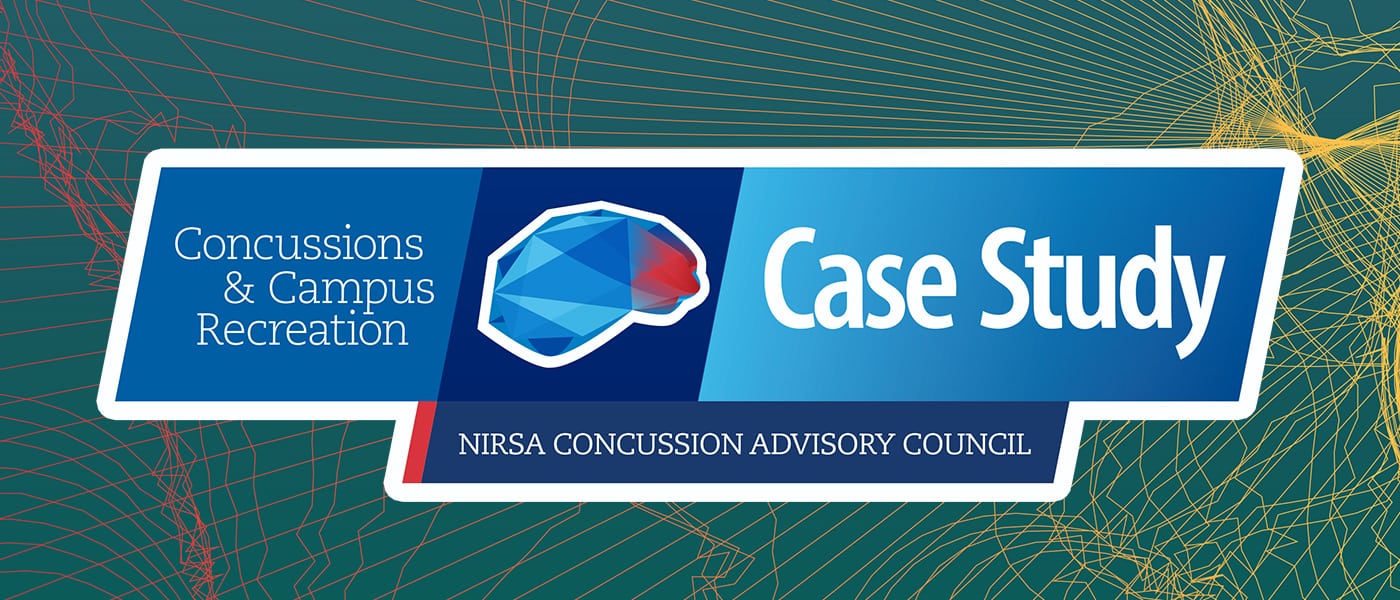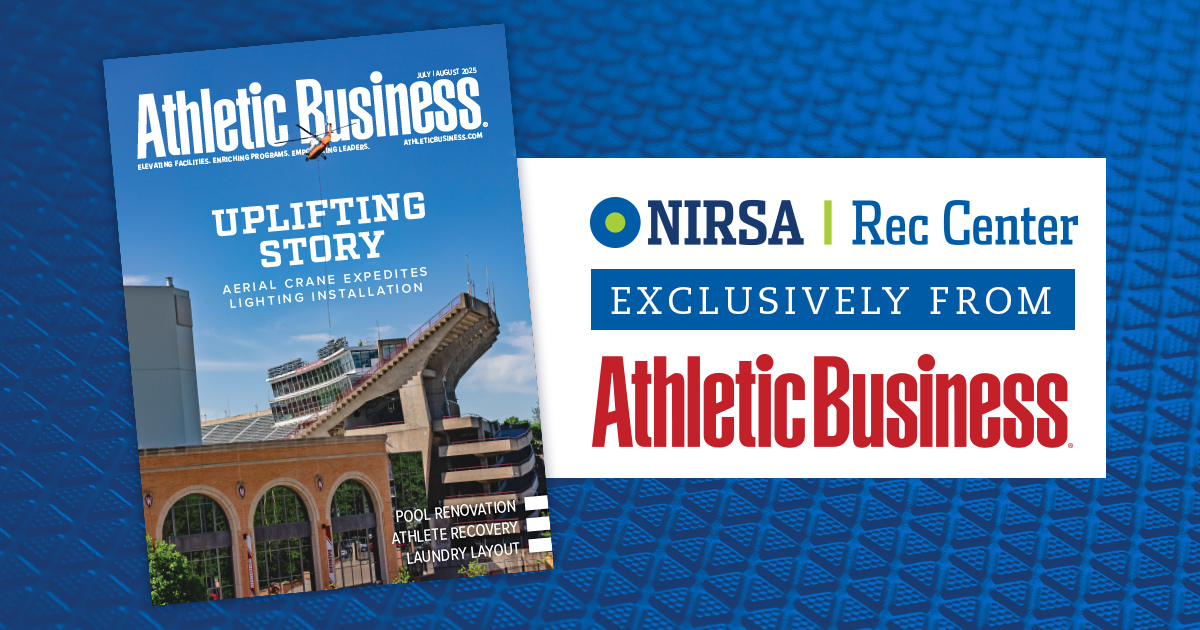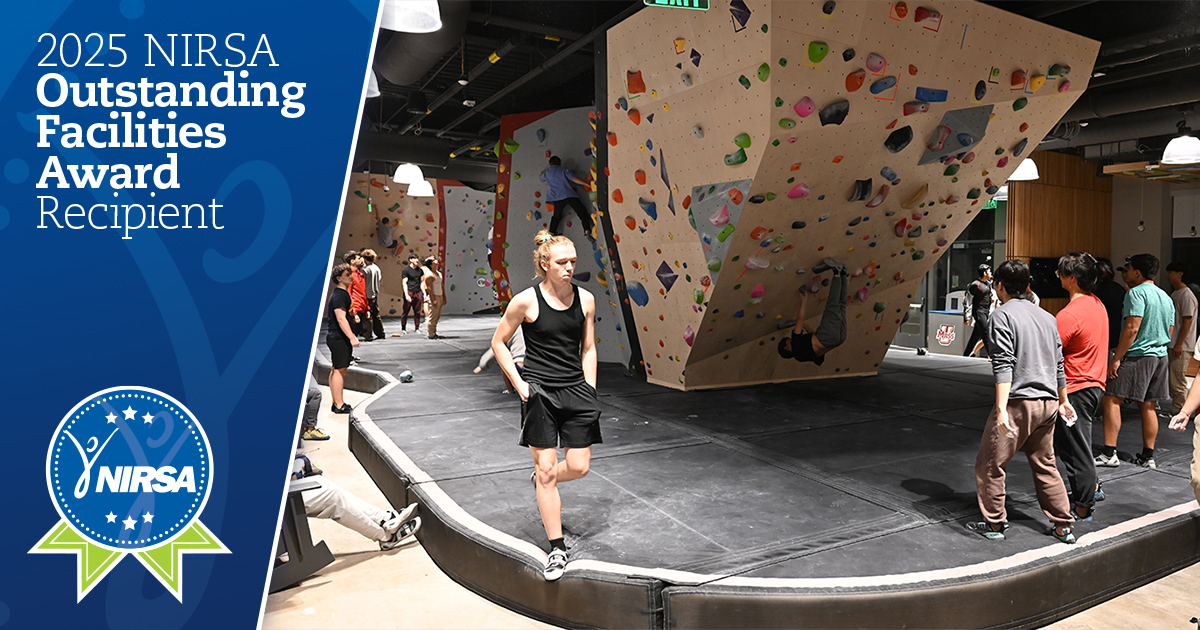My fellow NIRSA Concussion Advisory Council members Jason Linsenmeyer, Assistant Director of Recreation Programs at Oklahoma State University, and Larry Mellinger, Director of Campus Recreation & Wellness at Elon University, recently shared information about the importance of good policies and procedures as well as strong partnerships to manage concussion protocols.
The Advisory Council is also working to develop a series of case studies to give our campus recreation colleagues from across North America some insight into the various approaches to implementing concussion protocols. The University of Maryland is first up to share its case study.
Background
With a student population that exceeds 40,000 individuals (undergraduate and graduate), the University of Maryland in College Park is a member of the Big Ten Conference (B1G). The Department of Recreation and Wellness oversees an incredibly popular club sports program with approximately 4,500 athletes participating annually across nearly 50 clubs. Our intramural programs—with nearly 8,000 individual participants each year—struggle to accommodate all the interest in them due to space limitations.
With such high levels of activity, the likelihood of concussion occurrence must be assumed. Because the university does not have an academic program in athletic training and because the medical school associated with our university system is not part of the flagship College Park campus, we needed to find cross campus partners to help us develop policies and protocols, as well as to find access to certified athletic training staff.
Developing a partnership
As we looked to establish our concussion management program, our department’s first outreach in the spring of 2017 was to the UMD University Health Center. While the university’s medical director agreed that a concussion management program was necessary, the Health Center did not have enough resources available to commit the necessary personnel in addition to meeting its primary mission of providing broad health services to campus. Our team was referred to the head of orthopedics at the University of Maryland’s School of Medicine who introduced us to staff in the Center for Sports Medicine Health and Human Performance. The initial conversations eventually blossomed into a partnership that shaped our approach to concussion management.
Without certified athletic training personnel on our department’s staff, the guidance around responsible policies and protocols from staff at the School of Medicine was critical. Our department decided that it made sense for us to not only partner with them to help guide our approach to policies and protocols, but we worked with the School of Medicine to also develop a proposal to provide athletic training services for our department.
Their proposal outlined three different tiers of services. And, unsurprisingly, these services all came with corresponding price tags. Knowing how important a strong concussion management program is to our department, we shared the proposal in the fall of 2017 with our student employee advisory board and our recreation advisory board (comprised of student leaders, faculty, and staff members).
Ultimately, various advisory groups endorsed funding the mid-level tier of services from the proposal. For us, that meant contracting services for one head athletic trainer and one assistant athletic trainer (each at 40 hours per week coverage); all high-risk practices and games will be staffed by one of them and some moderate-risk games will be covered; they will also be responsible for staffing the training room twice a week to attend to all walk-in and intramural/club injuries. The risk-level of individual activities is rated by the AT staff.
It’s important to note here that our approach is what is planned; the program will be rolled out late fall of this year, initially for club sports and intramural sports before being expanded more broadly throughout the department during spring 2019. We know there will be lessons learned once we have some experience implementing our policies and protocols.
Highlights from UMD Recreation and Wellness concussion protocols
Here are a few things that colleagues might be most interested in learning about our program.
Participant and key staff education
Club sports and intramural sports participants will be required to view a short online video and complete a short quiz about basic signs/symptoms/dangers of concussions; club officers and IM sports officials will participate in a face-to-face, hour-long session with Recreation and Wellness Department professional staff and complete an online module which includes the signs/symptoms of concussions as well as appropriate response options; and IM and club supervisors and club safety officers will receive face-to-face instruction from members of the athletic training staff to get even more in-depth information about concussion recognition and response.
Documentation and record keeping
Regulating participation for students who have suffered a recognized concussion will be managed through IMLeagues; any medically-related documents will be securely managed by the athletic training staff using a document retention system that is managed through the School of Medicine.
To keep open lines of communication regarding participants who have been removed from play and those who are permitted to return to play, club sports and intramural sports staff members will exchange weekly updates. These professional staff members will be responsible for keeping their student staff and student leaders updated on the status of their participants.
Mandatory reporting
We recognize that some athletes, teams, or even coaches may be hesitant to report head injuries where the participant may have been concussed out of fear of removal from play. However, some key staff positions at UMD are required to report any head injuries to the department’s professional staff. Those key members required to report all head injuries include intramural supervisors, sports officials, club participants, club officers, club safety officers, all Recreation and Wellness Department professional staff members, and athletic training staff contracted through the School of Medicine.
Removal from play
When any head injury is observed during intramural or club sport play, an on-site verbal quiz will be administered to determine the likelihood a concussion has been sustained. A departmental accident report will be completed, and injured participants will receive a removal from play form which includes procedures for returning to play.
Student staff members who may be supervising activities where an injured participant is involved will be notified of individuals with removal from play status to assist with keeping the participant out of play until they are cleared to return. Professional staff in the department will be notified by any of the mandatory reporters mentioned above. The professional staff will immediately suspend affected participants in our software platforms to manage future participation rosters. They will also be required to notify the athletic training staff via email and a shared tracking worksheet.
Return to play
Before participants removed from play can return to play, individuals must have either the athletic training staff or other medical professional complete and sign a standard form. This signed documentation must be submitted to department professional staff no less than 24 hours prior to an athlete’s return to play; the 24-hour window allows for the removal of a related suspend notification in our software platform.
One issue that is still being discussed is how to manage return to play issues that occur during a weekend tournament, when the turnaround time between suspected concussions and clearance from a medical professional is reduced.
Implementation will bring new challenges and opportunities
This article describes what we plan to do. Although we have put a lot of energy into developing our protocols and forming a partnership with athletic training staff managed by the School of Medicine, how our program plays out remains to be seen.
Once our team has some experience applying this approach, we will reflect and apply lessons learned to strengthen our program over time.
- For more information, contact NIRSA Headquarters.
- If you are interested in highlighting your campus or a NIRSA member’s achievements on your campus, pitch us your ideas.
Wallace Eddy, PhD, RCRSP, is the Associate Director for Risk Management and Assessment at the University of Maryland's University Recreation and Wellness. He's also currently a member of NIRSA's Concussion Advisory Council; he can be reached at weddy@umd.edu.







